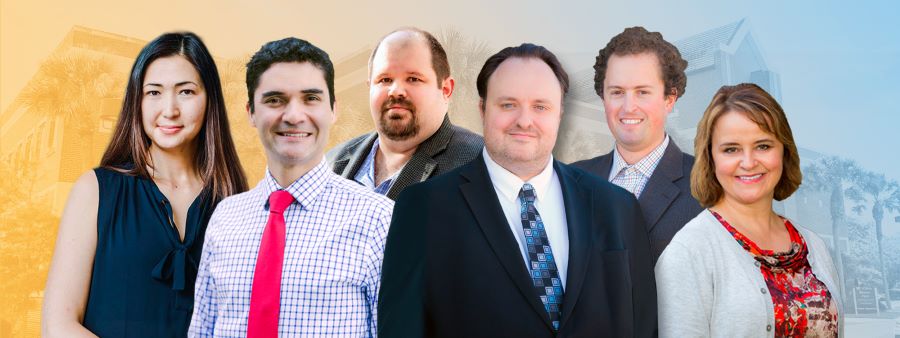Nuclear sleuths: University of Florida to lead $25 million national consortium on nuclear forensics
The University of Florida will lead a $25 million, 16-university team of 31 scientists and engineers in the development of new techniques and the training of future specialists in nuclear forensics, which identifies and tracks nuclear materials to support global safety.
The project, funded by the U.S. Department of Energy’s National Nuclear Security Administration (NNSA), aims to prepare 135 undergraduate, master’s and doctoral students to help federal laboratories throughout the United States address current and future needs in nuclear forensics, and to replace an aging workforce.
“I am honored that our team was entrusted by the NNSA to develop the next generation of leaders for the Department of Energy national laboratories,” said Professor Jim Baciak, the project leader and a professor in the Nuclear Engineering Program in UF’s Department of Materials Science and Engineering. “Our team represents a diverse array of technical areas that are required for robust nuclear forensics, including analytical chemistry, radiochemistry, environmental sciences, geochemistry, nuclear engineering, physics, statistical analyses, machine learning and optical sciences.”
Joining Baciak from the University of Florida are Assel Aitkaliyeva, Kyle Hartig, Juan Nino and Nathalie Wall from the materials science and engineering department, and Ryan Houim from the mechanical and aerospace engineering department.
“The consortium is a great recognition for our nuclear engineering program, our college and the university,” said Forrest Masters, interim dean of UF’s Herbert Wertheim College of Engineering. “This award represents a valuable opportunity to demonstrate our strong commitment to supporting research and workforce development oriented toward advancing national security.”

L to R: Assel Aitkaliyeva, Juan Claudio Nino, Ryan Houim, Jim Baciak, Kyle Hartig, Nathalie Wall
The researchers and their students will focus on five technical areas:
- Rapid Turnaround Forensics, led by Professor Brian Powell of Clemson University, will study methods to shorten chemical analysis techniques to 24 hours or less.
- Advanced Analytical Methods, led by Associate Professor Assel Aitkaliyeva of UF, will develop improved material characterization and microscopy techniques.
- Ultrasensitive Measurements, led by Associate Professor Nicole Martinez of Clemson, will investigate methods in environmental sampling and instrumentation to look at low-level signals.
- Signature Discovery, led by Assistant Professor Amanda Johnsen of Penn State University, will determine if new signals and measurements can lead to improved accuracy in determining material quantities.
- Prompt Effects and Measurements, led by Assistant Professor Kyle Hartig of UF, will seek to understand signals given off following a nuclear detonation.
Assisting in the leadership of the overall consortium is Deputy Director and Associate Professor Camille Palmer of Oregon State University.
The consortium will collaborate on research with staff scientists and engineers from seven Department of Energy national laboratories, each bringing their own unique expertise. Those national laboratories are Lawrence Berkeley National Laboratory, Lawrence Livermore National Laboratory, Los Alamos National Laboratory, Oak Ridge National Laboratory, Pacific Northwest National Laboratory, Sandia National Laboratory and Savannah River National Laboratory (SRNL).
Other universities in the consortium include the University of California – Berkeley, University of Central Florida, City University of New York, Clemson, George Washington University, Iowa State University, University of Michigan, University of Nevada – Las Vegas, North Carolina State University, University of Notre Dame, Oregon State University, Penn State, South Carolina State University, University of Tennessee, and Texas A&M University.
For more information on NNSA Consortium, please see the press release here.
